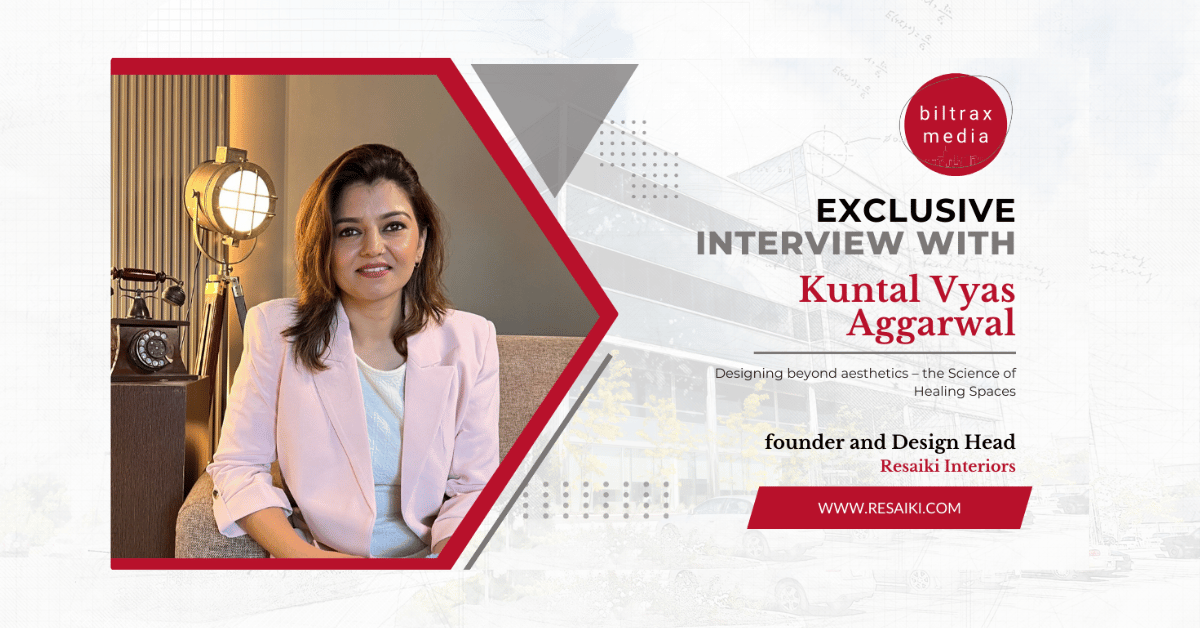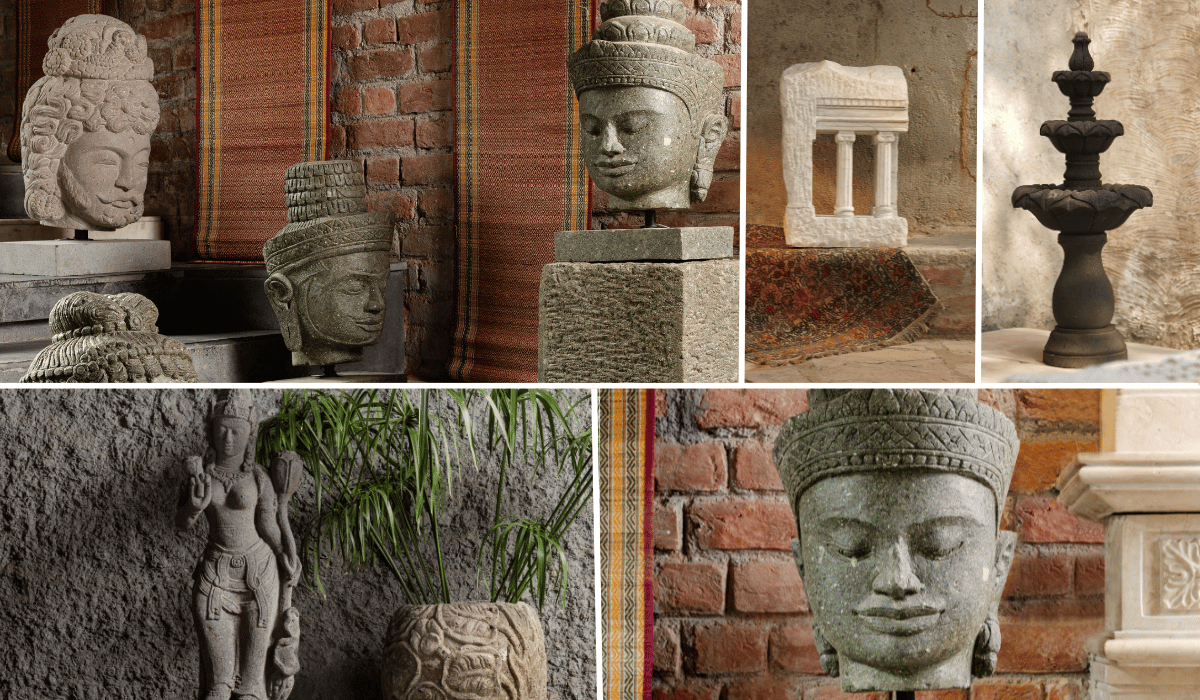There are things which will change and keep on changing who ever adapts to the change with innovation will survive.
– Ajay Nahar, CMD, Nahar Projects
Donning multiple hats of an architect, a developer, and an entrepreneur, Ajay Nahar treads a fine balance between the pragmatism and poetics of design. Mumbai-based Ajay Nahar, CMD, Nahar Projects studied architecture at the Academy of Architecture, Mumbai followed by a Master’s degree in Construction Project Management from UCE, Birmingham (U.K.).
Ajay offers multiple perspectives into the construction business and the various aspects of his practice from critiquing his own designs to optimising resources to training the next generation of architects and leaders. From construction to academics, Ajay’s work and trajectory offer an interesting lens to purview the construction industry and what the future holds.
How did you evolve from a young architect to an entrepreneur to a thought-leader?
Working on your own project as an architect, where you are also the developer and the manager seems aspirational and simple to an onlooker, but was the most challenging engagement that I undertook at the beginning of my journey. It is not easy to criticize your own work and produce multiple options that are reviewed by yourself. To this, there was an added layer and responsibility for finding resources to save time and costs. I gradually found joy in the multi-faceted role and I built Nahar Projects in 2003 which is my brainchild, yet a part of Nahar Group. The buildings thus built by Nahar Projects always prefix by the name ‘Nahar’ as goodwill for Nahar Group that my father founded in 1973.
How did you create your team of future leaders?
I hired and trained managers to create a strong team and workforce with the vision that they will work with as much rigour and determination as me. Having built that work-culture, I brought in more qualified professionals to build the team in a more focussed direction since we undertook challenging and complex projects that demanded stronger expertise. I focussed on finances, materials, and quality of architecture as my team handled the aforementioned. We worked on lighting design, furniture design, and installations, and so on. I wanted every project to imbibe certain creativity and quality of design which led me to the understanding that I was indirectly (and at times directly) involved in every aspect of the projects that I undertook. This journey has therefore been satisfying and fulfilling as it gives me the confidence to do bigger, better, and more challenging works.

I wanted to enable young architects to think critically and make them aware of the challenges of the real world. These aspects cannot be taught over a short course or an elective.
What beliefs and practices have shaped your current practice?
From completing my undergraduate program in architecture to pursuing my Master’s degree in Project Management in Birmingham till the current day; I have been a pragmatist learner. Learning should never stop. Peer-to-peer review of my work, training, and mentoring young professionals and teaching has been academically stimulating and a means to self-disciplinary learning. I organize each day and beyond by preparing notes the previous day and structuring my life accordingly. These habits have become a part of my life and professional journey. Teaching has also been a fulfilling and inspiring learning experience for me.
What made you engage with teaching architecture?
I wanted to enable young architects to think critically and make them aware of the challenges of the real world. These aspects cannot be taught over a short course or an elective. When given the opportunity, I was keen to impart my experiences and knowledge to these budding professionals at the Academy of Architecture. It often transpires that students pursue architecture without realizing their true potential. They sometimes even lack direction after graduation. I want to focus on these aspects to hone their capabilities. In a way, things come to a full circle when you go back to your place of learning and share your experience with young minds that are eager to embark on a new journey.
I wanted to bridge the gap between theoretical learning and practice as it transpires on-ground. Architecture school imparts knowledge in a highly idealistic manner whereas as practising architects we understand the challenges of designing within various parameters like the DCR, structural constraints, budgets, and so on.

When it comes to policies and regulations; building in Mumbai is never easy with the system and policies. But we upgrade our system to be above the system instead of trying to change things that are beyond our control.
What are some common misconceptions about the practice?
There are many; one being that a married architect-couple cannot function together optimally in the same office but in my case, my wife Puja and I complement each other’s design and executions. Another one is that a builder cannot be his own architect since he may compromise the design to cut costs. This is untrue in my case; my works have been landmark designs. At the same time, people believe that a developer offers only landmark edifices adding to the skyline; but my first work Nahar Panorama is home to my entire family in divine. The other misconception that I strongly argue against is the belief that low-cost housing compromises on design or specification. Good design has no scope for compromise.
What according to you is the making of good design?
I treat projects like the human body with a brain that carries out its functions, a heart that is at the core of a design-concept and emotions are the intangible qualities of its principles and values. The resultant product imbibes life and soul and the project speaks for itself. That is the meaning of good design to me.

Learning should never stop. Peer-to-peer review of my work, training, and mentoring young professionals and teaching has been academically stimulating and a means to self-disciplinary learning.
While good design is often aspirational and we are bound by many parameters like FSI, DCR policies, structural limitations, MEP provisions, budgets, etc. How do you manoeuvrer these aspects with examples of your executed and upcoming work?
Land-use has to be evaluated not as per its potential but what the site demands. We conduct cost-analysis, design analysis, and critically evaluate projects at various stages. We have a streamlined framework of evaluations and working styles, by virtue of which, we have always been on top of critical schedules for our projects. When it comes to policies and regulations; building in Mumbai is never easy with the system and policies. But we upgrade our system to be above the system instead of trying to change things that are beyond our control.
At what stage should the above-mentioned consultants be involved in design for optimal design output?
The consultant should be hired only when the project needs it and even that should be reviewed at every stage to keep a check on the project costs.
Can you throw light on the aspect of the sales and marketing of building projects?
You know your product the best. As a project becomes marketable, its maker knows more about it than anyone else does. I am on top of the sales and marketing strategies on my projects on a daily basis. Creating content for our projects, digital marketing, social media, and cost sheets and one-to-one meetings is something that I monitor every day.
Nahar Projects
Website: www.naharprojects.com
Contact: +91 (22) 2353 7021
Biltrax Construction Data is tracking 11000+ projects on its technology platform for its Clients. Visit Biltrax here or email contact@biltrax.com to subscribe and generate business leads.
Discover more from Biltrax Media, A Biltrax Group venture
Subscribe to get the latest posts sent to your email.





















